So began our quest to learn Sentijn. Getting to know a boat, on the intimate level that is prudent if going offshore, is not something that can be done in a day. Looking back, it took 3 years to get to full enlightenment with Orca–and she was small and simply outfitted. There are three levels in this journey.
Calibrating ‘Normal’
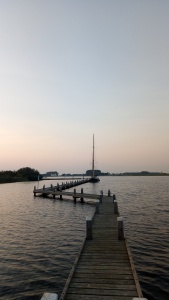
Free berthing on the Veerse Meer removed financial pressure while going over the boat’s gear.
At first, all noises are new. The engine sounds different than Orca’s because it has more cylinders (or do we need to run it at higher RPMs?). The rigging sounds different in 20 knots because the stays are longer, thicker, and tighter (are they too tight?). The sails are harder to hoist because they are larger and heavier (or are the halyard sheaves binding?) Was that water stain on the interior joinery there before (or is there a leak that needs attention)? Is there usually any water in the bilge (or is she sinking)?
This phase can be managed largely at the dock with some day sails. Living aboard helps; so does talking to the previous owner. We did both, with Sentijn, and it took about 4 months.
Reverse Engineering
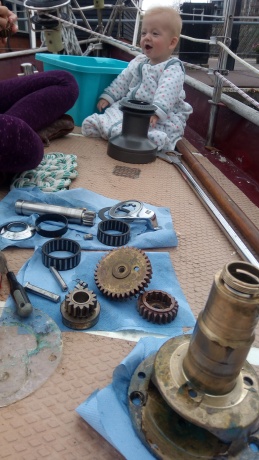
Cleaning and greasing winches is a good time to check for wear or corrosion.
Once a good reference point has been established, I began tracing hoses and wires. I loved finding unused wire & pipe runs (or whole vestigial systems) and ripping them out; Sentijn was full of them. We begun replacing worn pipes or cracked wires, and then verifying that systems are at least back to Normal (or, hopefully, better-than-Normal). Deferred maintenance–servicing winches, windlass, engine, batteries–was an opportunity to take those apart, figure out how they work, and then trying to identify weak points. When a component needs replacement, I bought two, if possible. Building up a compliment of spares is essential.
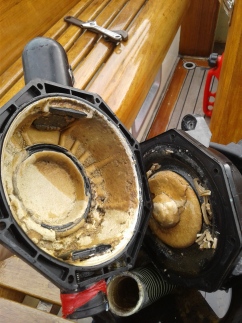
I suspect every used boat on the market has the usual head de-calcification job deferred.
The same can be said for tools, even though it hurts the wallet. I fooled myself with a mind game: “How much would it cost to call in the professional for this?” Purchasing a specialist tool almost always seems cheap after that haunting thought. After all, one of the big reasons we bought a larger boat was for tool capacity.
On Sentijn, I noticed a lot of the wire runs were twin conductor and about AWG 14. Though I had no specific job in mind, I bought a spool on principle, plus large amounts of assorted connectors. Ditto for the 20mm PVC pipe she favors for plumbing. Everything breaks sooner or later.
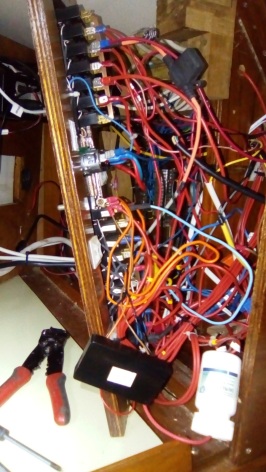
A few parts of Sentijn were too complex to fit into my head; for example, the space behind the switch panel seemed more like spaghetti than any sort of electrical system. I approached this one wire at a time. I chose a wire, and followed it in both directions to figure it out. I became intimate with that one single wire. Then, for each wire, the question: “Is it part of a critical system?” If an area of the boat is too hard to figure out with stable platform, warm and dry, with good lighting while everything is Normal and all systems nominal, then it will be impossible to troubleshoot when something inevitably goes haywire at sea. If the answer to that question was ever “no”, then I uninstalled the component and removed the wire(s).
At first, I was only able to trace a few wires each day. Each wire inevitably dissapeared behind paneling, into PVC conduit, or behind a locker–all of which had to be removed or unpacked. But, as we excised more complexity, the remaining mysteries became easier to unravel. At one point, Sentijn was down to GPS, VHF, and paper charts. But, after simplifying, organizing, and familiarizing, re-installing desired components was relatively easy.
We’re still deep in this phase with Sentijn, and I expect it to continue for another year or two.
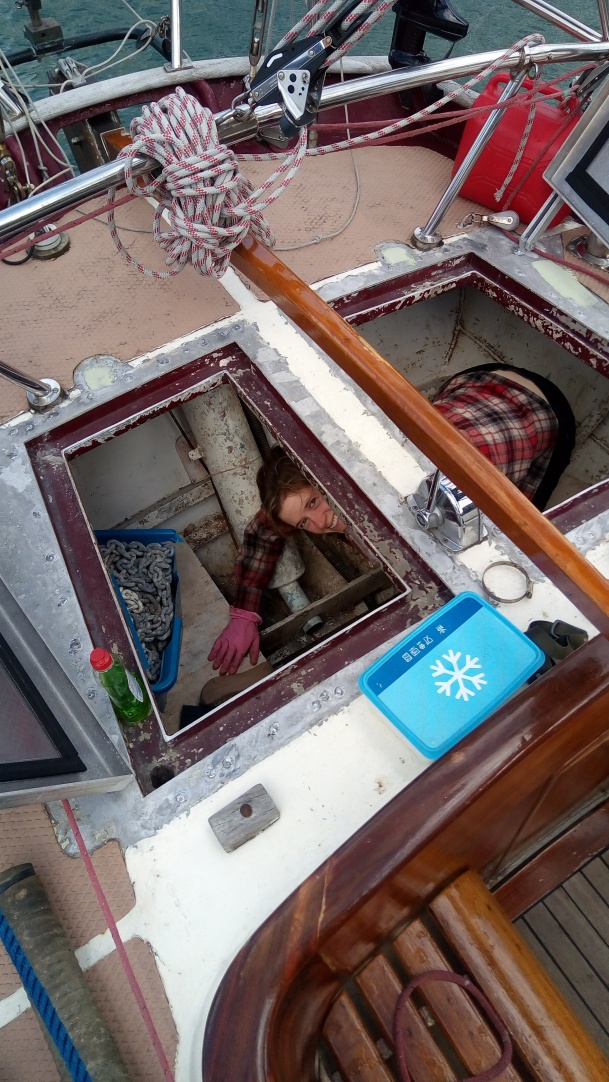
Take everything out of the lazarette–again–to trace that pipe.
Full Enlightenment
We had reached this stage on Orca, and it was bliss. We had arrived above the knowledge-and-maintenance inflection point where the learning curve levels off to near flat. Small, easy, and well-scheduled preventative maintenance jobs are the norm and failures are rare. On the off chance we were caught out, the conversation usually went like this:
“Honey, the water pump is making that slight gurgling again. Is it what I think it is?”
“Yes, dear. I should have replaced the diaphragm last month; they really only last two years, you know.”
“But you were drinking beer instead, I noticed…”
“We can do it now. The spare diaphragms are forward and, as I recall, the machine screws are pozi head and take an 8mm socket for the nuts. I know nothing is frozen because I used the magic goop last time and, according to my notes, the hose is 12mm ID and the hose clamps take a 6mm socket–both should be in excellent condition (as we replaced them recently), although inventory indicates we have both hose and clamps in stock if necessary.”
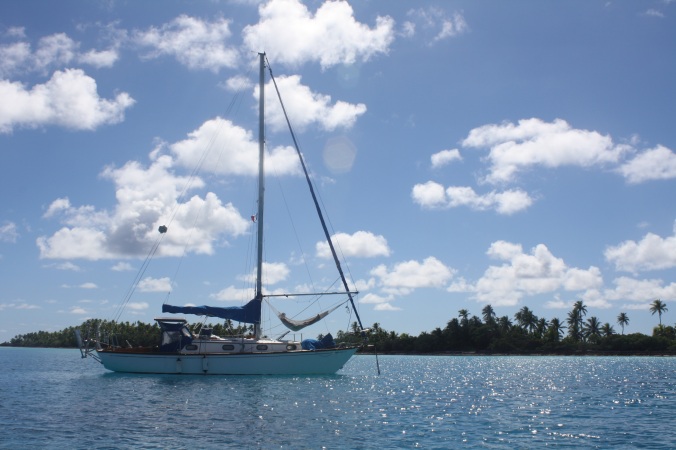
Ahh, nirvana.